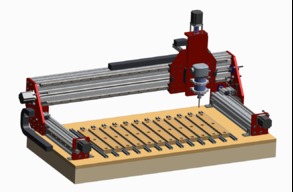RigidOko
Discussion in 'CNC Mills/Routers' started by SecretSpy711, Oct 16, 2017.
RigidOko
Discussion in 'CNC Mills/Routers' started by SecretSpy711, Oct 16, 2017.
Heavily upgrading my 1200x500 Shapeoko 2... ...er, wait, scratch that... Building an all new machine, roughly the same size, that should be more rigid than a Shapeoko 3!
